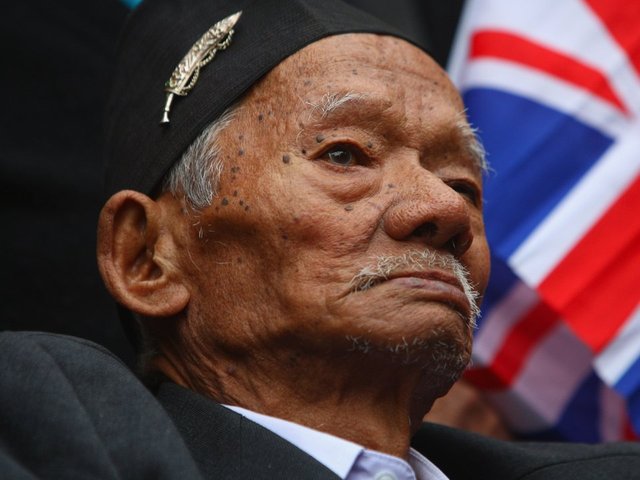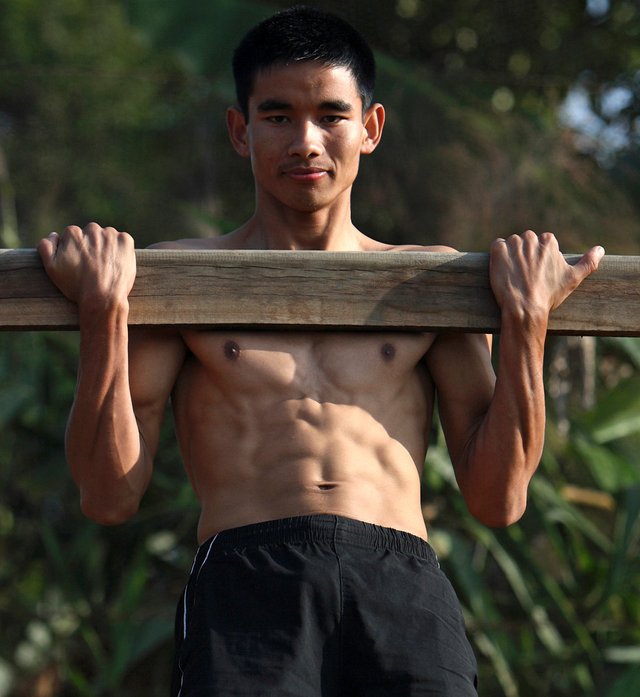The Gurkha: World's toughest soldier
This is arguably the toughest soldier in the world

Soldiers of the First Battalion of the Royal Gurkha Rifles.
Standing at 5-foot-3, the average Gurkha is easy to overlook, let alone be seen as a soldier.
However, that mistaken belief may very well be your last thought if ever you meet a troop of Gurkhas in battle: Their motto, "better to die than be a coward," suggests as much.
History of the Gurkha
Hailing from the mountainous region of Nepal, the Gurkhas were first witnessed by the world when they were invaded over 200 years ago by the British East India Company. Suffering immense casualties, the British forces were eager to sign a hasty peace treaty. A soldier even noted in his memoirs: "I never saw more steadiness or bravery exhibited in my life. Run they would not, and of death they seemed to have no fear."

The Nusseree Battalion, later known as the 1st Gurkha Rifles, in 1857
According to the peace treaty's terms, the Gurkhas were allowed to join the East India Company's army. Since then, more than 200,000 Gurkhas fought in virtually every military campaign — the World Wars, Afghanistan, and even the brief 1982 Falklands War. However, the UK wasn't the only country privy to the Gurkhas' services; Singapore, Malaysia, and India have all employed them in their own armies and police forces.
The Gurkha's heroism

Gurkha Lachhiman Gurung
Gurkha Lachhiman Gurung
The Gurkhas' bravery is illustrated in the case of rifleman Lachhiman Gurung. In 1945, Gurung was in a trench with two other soldiers when 200 Japanese fighters opened fire on them. After his comrades were wounded, Gurung noticed several incoming grenades fall into his position. He threw them back; however, after the first two, the third grenade exploded in his right hand.
Suffering massive injuries, Gurung managed to use his left hand to fire his rifle to kill several Japanese soldiers as they were storming his trench. All in all, 31 Japanese soldiers were killed during the fight.
The Gurkhas' eagerness for battle comes at a cost, however — 43,000 of them died during WWI and WWII. Although they have suffered heavy losses, their heroic actions haven't gone unnoticed. So far, 26 Victoria Crosses, the UK's highest award for bravery, have been awarded to Gurkha Regiments.
The Gurkha's training

Gurkha soldier training
A young man exercises during training in Pokhara, Nepal.Gopal Chitrakar/Reuters
Nearly 28,000 Gurkha candidates compete each year for just 200 places in the British Army. In order to qualify, they are required to do 75 bench jumps in one minute and 70 sit-ups in two minutes. Their next task seems like a scene from a kung fu training montage — running 5 kilometers up the foothills of the Himalayas with 25 kilograms' worth of rocks on their back in under 55 minutes.
Each Gurkha soldier is eventually awarded a traditional weapon known as a "kukri." Once drawn, this 18-inch curved knife is said to need to have tasted blood — that if the Gurkha had not managed to draw the blood of his enemy, he would have to cut himself before sheathing the weapon.